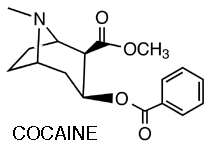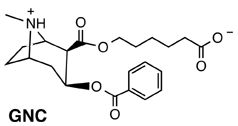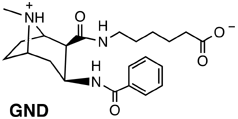|
(page 2 of 2)
Not surprisingly, the high availability of cocaine in those
areas where the biggest addicts live is perhaps the worst
possible complication for those users who are seeking treatment.
After all, says Smith, “cocaine addiction is a chronic
brain disease characterized by compulsion and lack of control.”
Smith believes the best recovery programs are those that
combine traditional psychosocial behavioral therapy with pharmacological
treatment, because this is the best way to treat addiction
in general. Many heroin addicts, for instance, are able to
stay clean through a combination of counseling and daily doses
of methadone, a treatment that has been available for several
decades.
The Treatment
“Unfortunately,” says Janda, “there is no
methadone for cocaine.”
In fact, says Janda, there currently are no suitable medications
at all for treating cocaine addiction. Some compounds do exist,
but these act by interfering with cocaine in the brain, leading
to unwanted neurological side effects.
Janda’s new potential medication, called GND, is similar
in structure to another cocaine vaccine, called GNC, which
the group designed several years ago. Both vaccines are structurally
similar to cocaine.
Although they have not yet undergone clinical trials, the
vaccines have shown great promise in Janda’s studies.
GND and GNC act by stimulating an active immune response in
the bloodstream. After taking the vaccine, a patient’s
immune system would, in theory, create an antibody against
the vaccine, and this antibody would also target cocaine because
of its similar molecular shape.
Janda also looked at boosting passive immunity by administering
the antibody and not the vaccine, another way of achieving
the same effect.
The studies show that the vaccine and antibody treatments
given alone both suppress the psychomotor effects of cocaine
for up to twelve days following vaccine inoculation. The studies
also showed that the effect increased dramatically through
concurrent passive immunization—administering the antibody
the immune system creates at the same time as the vaccine.
In practice, the vaccine would be an integral part of certain
rehabilitation processes and would be administered by health
professionals in a treatment setting.
Addicts would probably receive boosters of both the vaccine
and the antibody, as this combination has proven to have the
longest lasting effect in the study. Then if these recovering
addicts later try to get high, their immune systems will keep
most of the cocaine molecules from entering the brain. The
drug would then, in theory, have a minimal effect on dopamine
regulation in their brains’ pleasure centers.
They wouldn’t feel high, and they wouldn’t experience
psychological reinforcement. Hopefully, this would help prevent
relapse, the bane of all treatment programs.
“You have to prevent relapse early,” says Smith.
“The vaccine will be good for keeping people on the path
of recovery.”
An Uncertain Future
Though the GNC and GND molecules are very similar—both
structurally and in terms of how they stimulate the immune
system—the antibodies they produce are not the same.
In the laboratory, model systems using GND, the new vaccine,
showed a slightly greater efficacy than previous models that
used GNC. However, this greater laboratory efficacy may not
mean that the newer compound will replace the older one before
either eventually finds use in treatment. Both are years away,
and GND is in a much earlier stage of development than GNC.
GNC, the original vaccine, has already gone through a lengthy
testing process and is coming close to human trials. The vaccine
had to be made non-toxic to humans. Plus details of its synthesis
had to be worked out so that it can be manufactured easily
and on a massive scale.
These issues necessitated an investment of basic science
capital long before GNC was even close to reaching patients.
Janda’s work has been funded through NIDA, with a big
boost coming from the generous private contributions of the
Joseph Drown Foundation and Mr. Robert E. Martini.
Such support allowed Janda to extend his work on GNC and
make the second-generation vaccine, GND. Whether or not GND
makes it to the clinic or even as far as human trials, though,
depends a lot on whether there is any interest in developing
the compound clinically.
“It works like gangbusters,” says Janda, “But
it’s not as synthetically accessible as the original.”
Not yet.
1 | 2 |

|



Structures of cocaine and the vaccines
GNC (middle), and GND (bottom). In GND the C-2 and C-3 esters
in GNC have been exchanged for amides, which improves hydrogen
bonding with the antibody.
See also:
•
The Janda
Laboratory
•
Article:
M. Rocio
A. Carrera, Jon A. Ashley, Peter Wirsching, George F. Koob,
and Kim D. Janda, "A second-generation vaccine protects against
the psychoactive effects of cocaine," Proceedings of the National
Academy of Sciences, USA, Vol. 98, Issue 4 (Feb. 13, 2001),
1988-1992.
|

